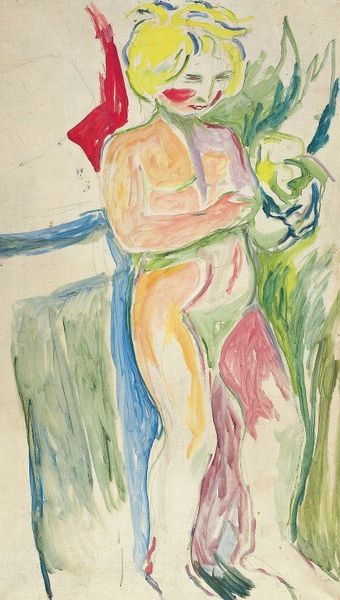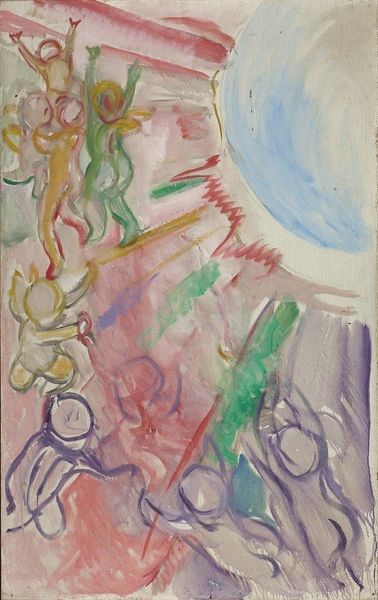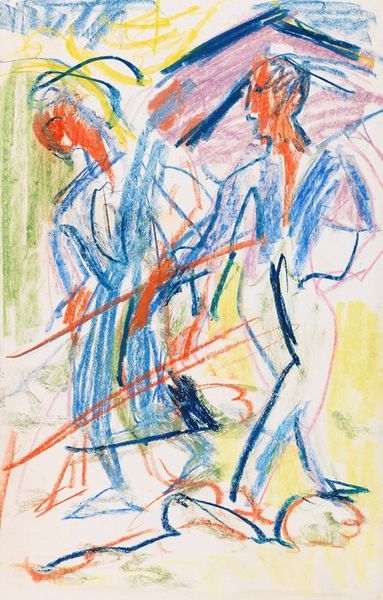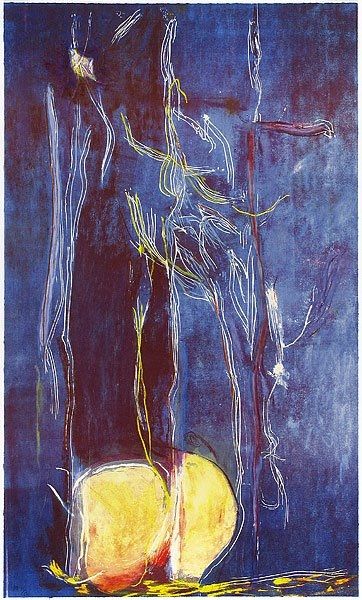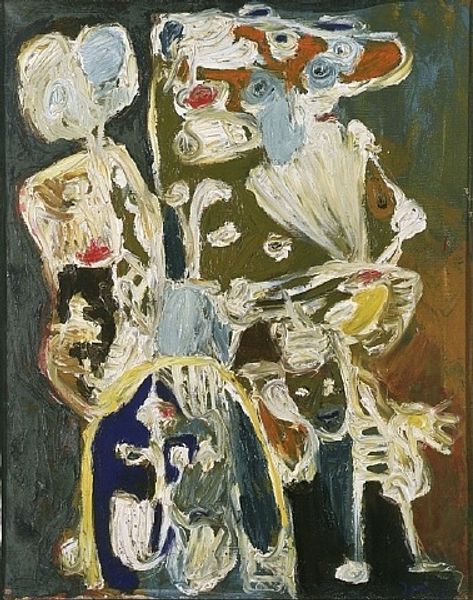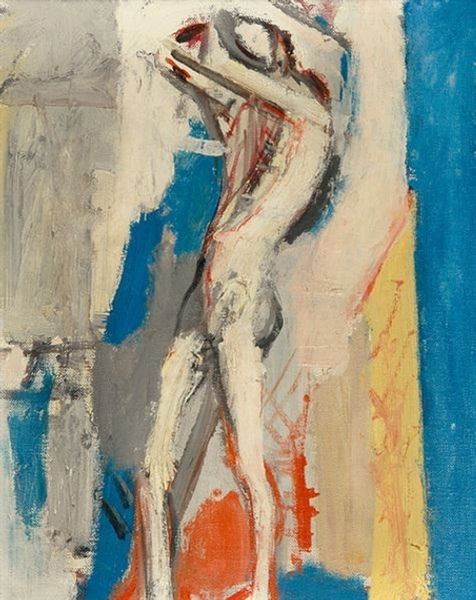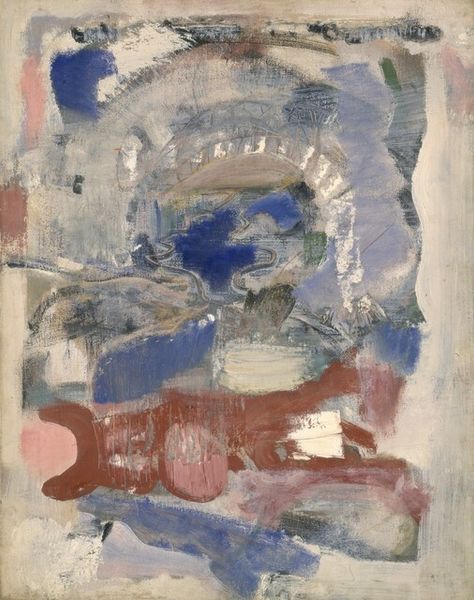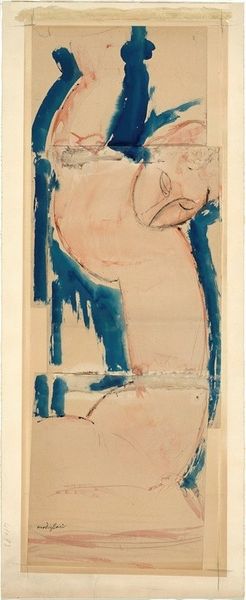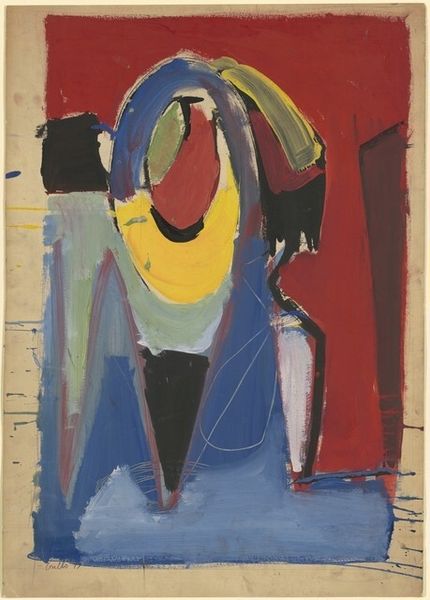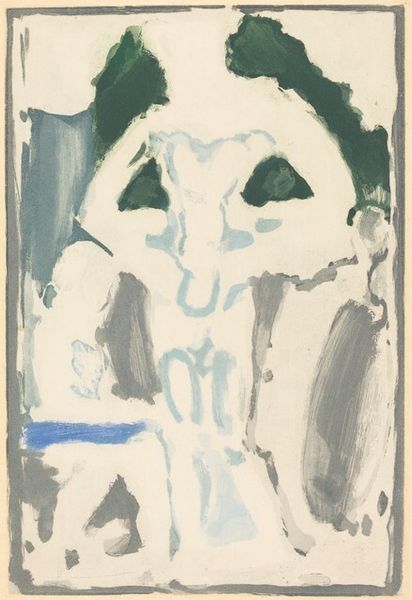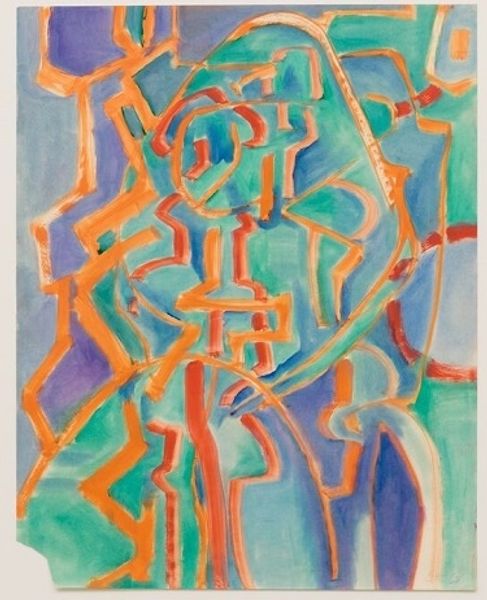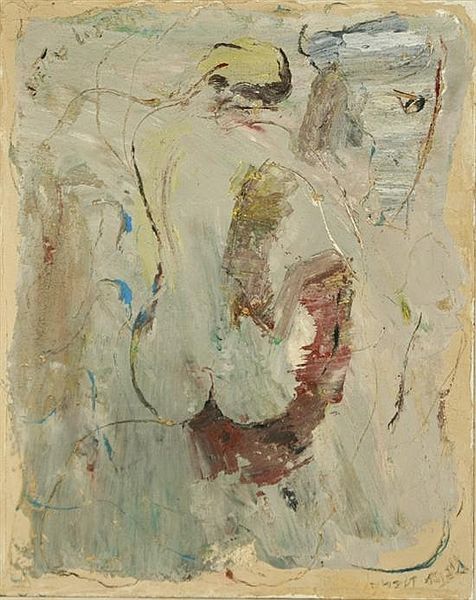
Copyright: Pierre Alechinsky,Fair Use
Editor: This is "Hommage à Ensor" by Pierre Alechinsky, created in 1956 using oil paint. I find it a chaotic but exciting mix of colors and shapes. How do you interpret this work? Curator: Given the title, let's think about Ensor, a Belgian artist known for his paintings of masked figures. How might Alechinsky be engaging with Ensor’s legacy and what were the socio-political influences on Alechinsky at this time? Editor: I can see the mask reference. Those bold lines could be faces, distorted and piled up on top of each other. And 1956 was after World War II – did that global event affect art this way? Curator: Precisely. Artists like Alechinsky sought new visual languages. The layering and abstraction speak to a fragmented, perhaps traumatized, post-war psyche. Think about how museums started exhibiting works after the war that were once prohibited. Editor: So the very act of creating abstract art was a kind of social statement? A rejection of old, possibly harmful, forms? Curator: Exactly. Expressionism gained ground, and Alechinsky was engaging in a cultural shift to broaden how we imagine society's images, symbols, and politics. Editor: This makes me reconsider my initial reaction to it being "chaotic." I now appreciate its social depth! Curator: Yes, understanding art is not just about seeing, but contextualizing, making it political in a sense.
Comments
No comments
Be the first to comment and join the conversation on the ultimate creative platform.

